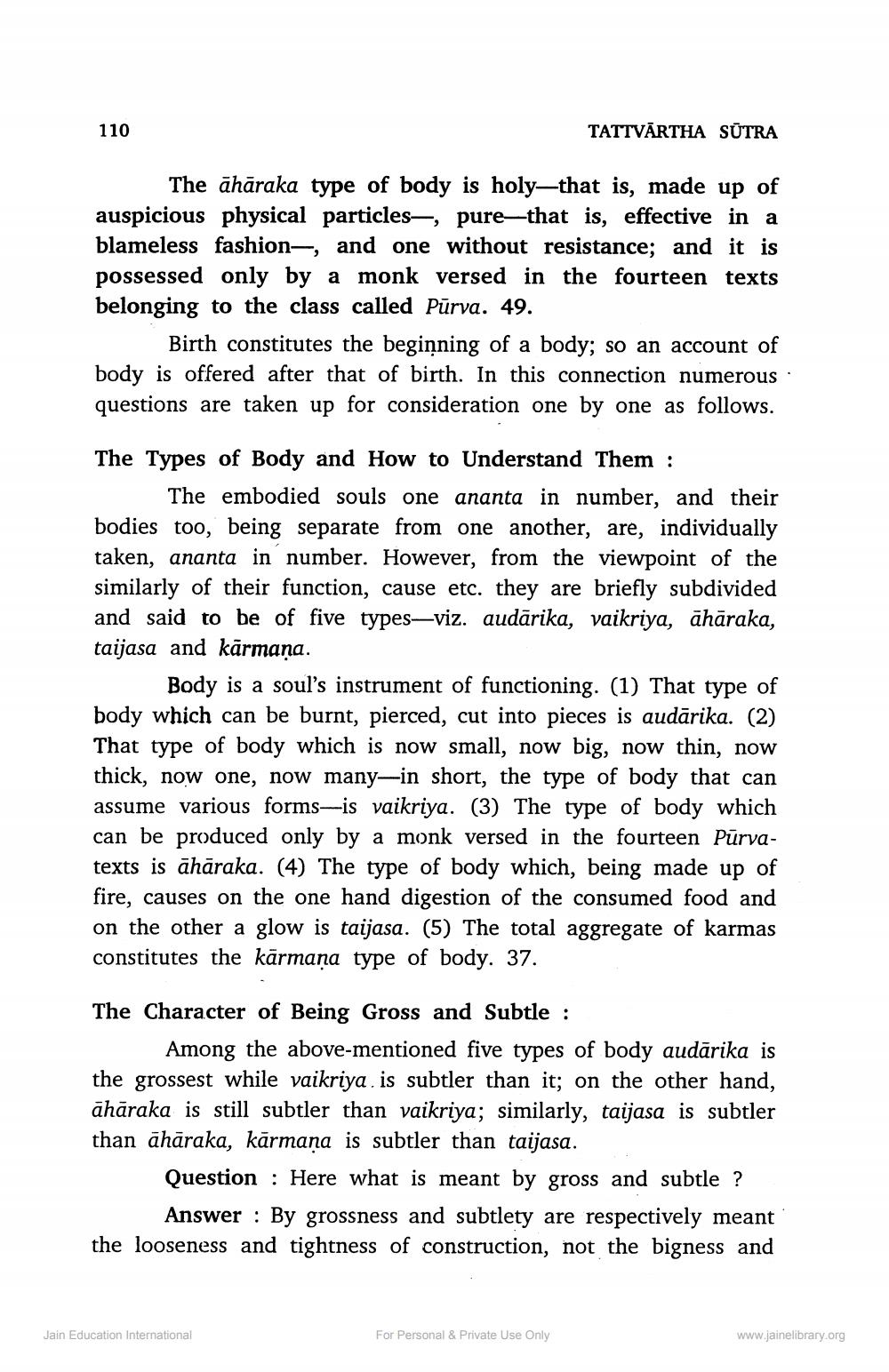________________
110
The āhāraka type of body is holy-that is, made up of auspicious physical particles-, pure—that is, effective in a blameless fashion-, and one without resistance; and it is possessed only by a monk versed in the fourteen texts belonging to the class called Pūrva. 49.
TATTVĀRTHA SUTRA
Birth constitutes the beginning of a body; so an account of body is offered after that of birth. In this connection numerous questions are taken up for consideration one by one as follows.
The Types of Body and How to Understand Them :
The embodied souls one ananta in number, and their bodies too, being separate from one another, are, individually taken, ananta in number. However, from the viewpoint of the similarly of their function, cause etc. they are briefly subdivided and said to be of five types-viz. audārika, vaikriya, āhāraka, taijasa and kārmaṇa.
Body is a soul's instrument of functioning. (1) That type of body which can be burnt, pierced, cut into pieces is audārika. (2) That type of body which is now small, now big, now thin, now thick, now one, now many-in short, the type of body that can assume various forms-is vaikriya. (3) The type of body which can be produced only by a monk versed in the fourteen Pūrvatexts is āhāraka. (4) The type of body which, being made up of fire, causes on the one hand digestion of the consumed food and on the other a glow is taijasa. (5) The total aggregate of karmas constitutes the kärmaṇa type of body. 37.
The Character of Being Gross and Subtle :
Among the above-mentioned five types of body audărika is the grossest while vaikriya. is subtler than it; on the other hand, āhāraka is still subtler than vaikriya; similarly, taijasa is subtler than āhāraka, kārmaṇa is subtler than taijasa.
Question: Here what is meant by gross and subtle ?
Answer: By grossness and subtlety are respectively meant the looseness and tightness of construction, not the bigness and
Jain Education International
For Personal & Private Use Only
www.jainelibrary.org




